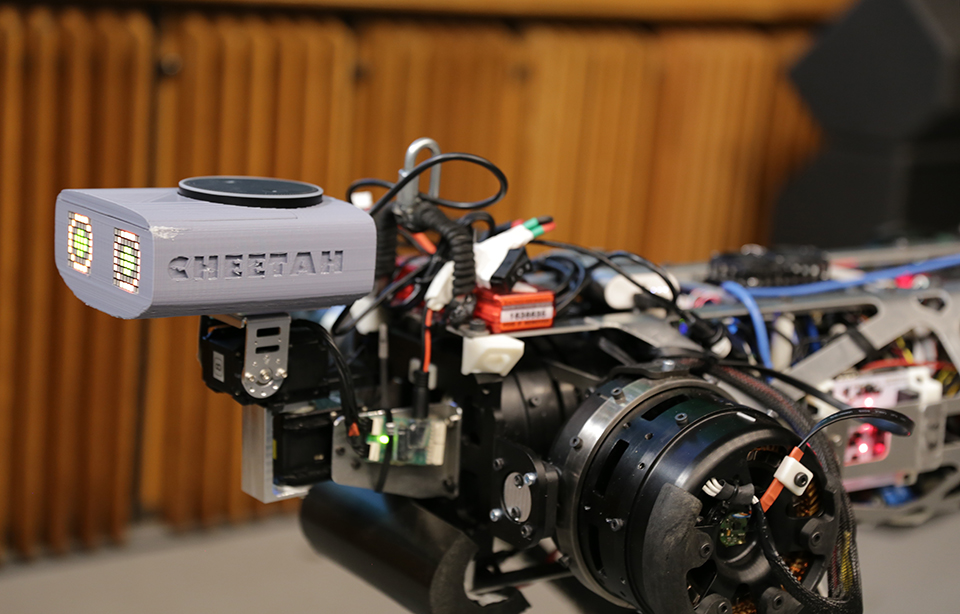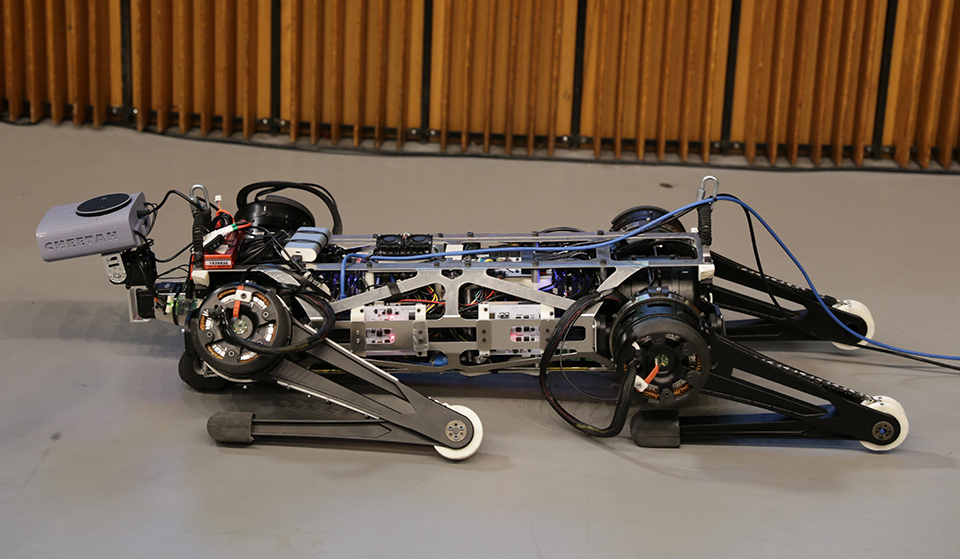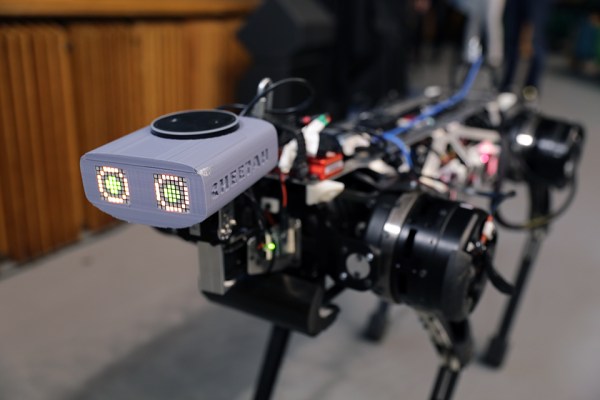The latest version of MIT’s Cheetah robot made its stage debut today at TC Sessions: Robotics in Cambridge, Mass. It’s a familiar project to anyone who follows the industry with any sort of regularity, as one of the most impressive demos to come out of one of the world’s foremost robotics schools in recent years. Earlier versions of the four-legged robot have been able to run at speeds up to 14 miles an hour, bound over objects autonomously and even respond to questions with Alexa, by way of an Echo Dot mounted on its back.
The Cheetah 3, however, marks a kind of philosophical change for the robot created by professor Sang-bae Kim and his team at MIT’s Biomimetics lab. The focus has shifted from impressive demos to something more practical — this time out, the team is focused on giving the world a robot that can perform search and rescue.
“Our vision changed to wanting to use this in a real situation, to dispatch it to Fukushima,” Kim told TechCrunch ahead of the event. “We want to use this in a place where we don’t want to use humans. We can use the robot to monitor the environment and other emergency situations. There are a lot of emergency situations where you just want to do a routine check.”

Post-nuclear disaster Fukushima Japan is often brought up in these discussions around where industrial robots can be useful in the real world, and indeed, a number of robots have already been deployed to site, going where humans can’t — or at least shouldn’t. iRobot/Endeavor’s Packbot has done some work surveying the site, but the Cheetah 3 is able to do things that more traditional wheeled robots can’t, owed in part to its animal-inspired, four-legged build.
“I’ve been fascinated by developing legged machines, which can go where real machines cannot go,” explained Kim. “As mankind, we’ve conquered air, water, ground — all of these categories, but we conquered ground in a different way. We modified the ground for our wheels.”
And it makes sense. It’s the same reason so many roboticists continue to be drawn to human- and animal-inspired robots. We’ve built our environment with us in mind, so a robot drawing on similar evolutionary source material will probably do a better job navigating around. In the case of the Cheetah, that means walking around rubble and up stairs. The company also demoed the new Cheetah’s ability to balance on three legs, using the fourth as a sort of makeshift arm. It’s still in the early stages, but the team is working on a dexterous hand that can perform complex tasks like opening doors — velociraptors eat your hearts out.

The new Cheetah design also makes it more capable of carrying payloads — and if this is all starting to sound like what Boston Dynamics has been working on with robots like Big Dog, it’s no coincidence. Both projects were born out of the same DARPA funding. Though, unlike Boston Dynamics’ work, Kim points out, the Cheetah project has used electric motors (rather than hydraulics) all along. Though Boston Dynamics introduced that functionality as well with the Spot and Spot Mini.
Kim is careful to remind me that this is all still early stages — after all, today’s event is Cheetah 3’s big public debut. For now, however, the team is taking a more pragmatic approach. “We’re doing the easy things first,” Kim explained with a laugh. The robot is current being tested across the MIT campus, traversing hills and walking up stairs. Next year, the company will push the Cheetah even further. It took the functions out in the new versions but will be adding them back into the 3 later.
